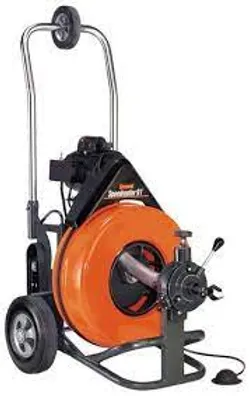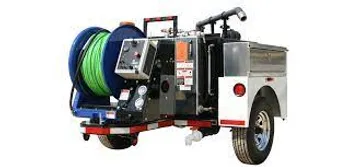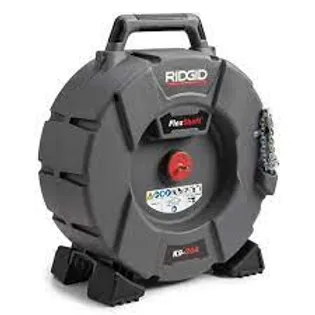Blog
In the professional world of drain cleaning there are three main ways of cleaning out a drain. The tried and proven method of the cable machines. Whether a drum machine, sectional machine, or a cable with a drill at the end; the cable machines have been around for decades. The hydro-jetting system, which uses high pressure water coming from a hose that goes in the drain is also a well proven method. And lastly, the flexshaft cable machines. The new kid on the block. These machines are similar to the cable machines but use a different style cable. Each method has its own pros and cons and serves its own purpose.
Cable Machines
Cable machines are the most common method. They have been the go-to machine for plumbers across the globe for decades. They work. They are easy to maintain. Easy to use. But they are bulky and heavy which limits where you are capable of cleaning the drain.
Drum machines will almost never get put on a roof to cable from a roof vent. And depending on where the stack is in the basement plumbers will struggle to gain access to the cleanout with a cable machine. On top of that cable machines are messy. With an open cable spinning, they will fling sewage around the area and some of what it flings is almost impossible to get out, especially on white walls. When it comes to cleaning a mainline from a basement stack, cable machines can only utilize a blade 3-4 inches wide. So, once the blade gets out the home and it opens to 6” clay with roots, that 3” blade will only be cleaning half the pipe.


Hydro-Jetting
Hydro-jetting utilizes high pressure water to flush out any clog in a drain. From grease to roots, the” jetter” can handle it all. With most jets having up to 500’ of hose, there is no drain that will be too long. And going from a 3” line to a 6” line will not affect the effectiveness of the jet. Downside to the jet is that you will be adding gallons of water per minute to a drain that is already clogged. On top of that, with the high-pressure water, there is a good chance of the water shooting out of drains and making a bit of a mess. Doesn’t happen all the time or very often at all but it is a possibility. Due to the fact that most jetting systems start at around $10k and can go up to $70k easily, jetting will be significantly higher cost than a cable cleaning. Not every drain needs to be jetted so beware of companies trying to push the extra charge of doing so for no reason.
Flexshaft Cable
The flexshaft cables are the newest style of drain cleaners on the market. They have proven to be quite effective though. Right up there with jetting, the flexshaft cable has the capabilities of cleaning a drain entirely. Utilizing a cable enclosed in a sheath that has a cutting device on the end.
The cable spins but the sheath does not therefore allowing the drain technician to camera the line at the same time. This also eliminates any potential mess that the regular cable machines would make. The cutting device is a series of chains, with or without carbide teeth and a drill head. So, whether going from a 3” stack or a 6” yard vent, the chains will expand to the size needed to clean the whole pipe. Just about the same effectiveness as the hydro jet but at the fraction of the cost. A flex shaft machine capable of handling 2”-6” pipes would cost less than $2000 compared to a $10k jet machine. Making it a more cost-efficient process that will give just about the same results.
So, which process is the best? Jetting and flexshaft are neck to neck. Jetting will most likely give a bit better cleaning but flexshaft will leave the mess in the pipe and more money in your account. All three serve their purpose but with lower costs, cleanliness and drain cleaning effectiveness the flexshaft cable machine is taking the lead!
